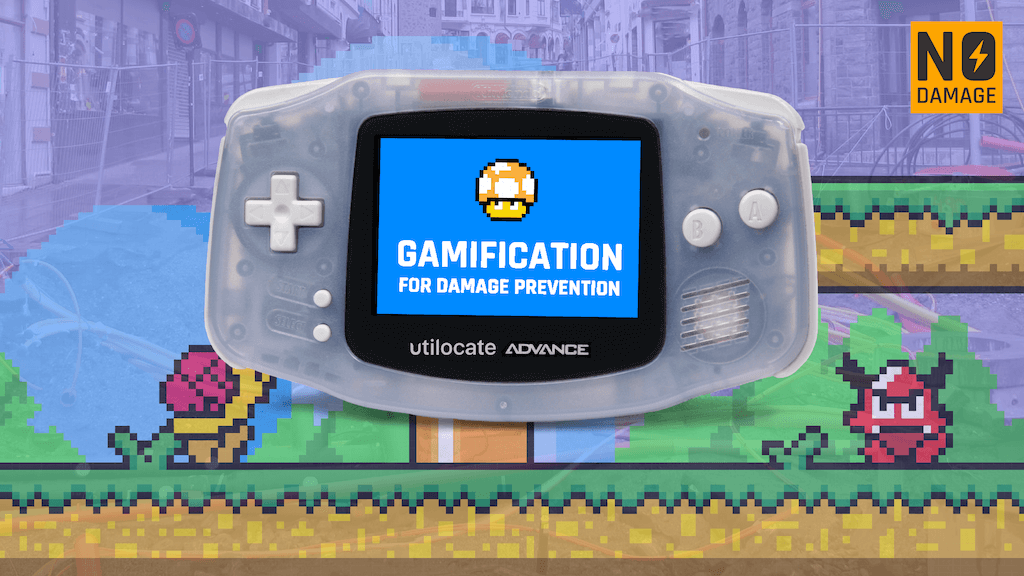
I've been using DuoLingo a bit recently and it's been bringing out my competitive side. I don't like droppoing out of the leaderboard and I'm not going to let my streak go! I was thinking about how we could apply some of these strategies to our industry and what we might gain from it. To address the damage prevention industry's challenges, innovative approaches like gamification can be transformative. By applying game design elements to training, productivity, and engagement, gamification can significantly enhance the effectiveness of damage prevention practices. Here are five specific ways gamification can benefit the damage prevention industry, supported by research findings:
1. Enhanced Training Effectiveness
Training in the damage prevention industry is essential but often challenging. Traditional training methods can be monotonous, leading to disengagement and poor retention of information. Gamification can make training more engaging and effective by incorporating interactive elements and real-time feedback.
Interactive Learning Modules: Incorporating quizzes, simulations, and interactive modules into training programs can significantly improve knowledge retention. Studies have shown that gamified learning environments outperform traditional methods in terms of success rate and retention rate, with increases of up to 42% in some metrics(SpringerLink) (MDPI). For instance, a training module on utility locating could include a virtual reality (VR) simulation where trainees navigate different scenarios, earning points for accuracy and speed. This approach ensures that workers retain critical safety and operational information more effectively.
2. Increased Productivity and Efficiency
Gamification can boost productivity by introducing a competitive element to daily tasks. By setting clear goals and offering rewards for achievements, companies can motivate employees to perform at their best.
Performance Metrics and Rewards: Implementing a system where workers earn points for completing tasks efficiently and accurately can drive productivity. For example, locators could earn points for each successful locate and additional points for completing tasks within a specific timeframe. Research indicates that gamified systems can improve performance by offering immediate feedback and rewards (SpringerLink). These points could be redeemed for rewards such as gift cards, extra vacation days, or monetary bonuses, fostering a culture of excellence and accountability.
3. Improved Safety Compliance
Safety is paramount in the damage prevention industry, and gamification can enhance compliance with safety protocols. By creating a gamified platform where employees can track their safety performance, earn rewards for following guidelines, and compete in safety challenges, companies can foster a more safety-conscious workforce.
Safety Challenges and Competitions: Organizing safety challenges and competitions can motivate employees to adhere to safety protocols rigorously. For instance, teams could compete to achieve the highest safety compliance rates over a month, with leaderboards and rewards for top performers. Studies have shown that gamification can lead to improved behavioral outcomes by satisfying intrinsic motivations such as competence and relatedness (SpringerLink) (MDPI). This approach can reduce incidents of utility strikes, cross bores, and other safety hazards, ensuring a safer working environment.
4. Real-Time Data Collection and Analysis
Gamification systems can be integrated with ticket management systems like Utilocate to collect and analyze real-time data on various metrics. This data can be used to optimize workflows, tailor training programs, and ensure transparency and accountability.
Data-Driven Insights: Utilocate can capture detailed data on employee performance, task completion times, and safety compliance rates. By embedding game mechanics into the system, we could leverage this data to identify areas for improvement and make informed decisions. For example, if data shows that certain employees consistently outperform others, their methods can be studied and shared as best practices(SpringerLink.
5. Increased Employee Engagement
Employee engagement is crucial for productivity and job satisfaction. Gamification can significantly enhance engagement by providing clear goals, immediate feedback, and tangible rewards.
Leaderboards and Achievement Badges: Implementing leaderboards and achievement badges can create a sense of competition and motivation among employees. Studies have shown that gamification can lead to higher levels of engagement and motivation (SpringerLink). In the damage prevention industry, employees could compete to climb the leaderboards based on their performance, accuracy, and adherence to safety protocols. Recognizing top performers with badges and rewards can boost morale and encourage others to strive for excellence.
Conclusion
By integrating gamification into training programs, daily operations, and data management systems, the damage prevention industry can enhance productivity, improve safety compliance, and foster a more motivated and engaged workforce. Leveraging advanced systems like Utilocate to capture and utilize data can further enhance these gamification efforts, ensuring a more efficient and transparent industry. Investing in gamification is not just about making work more enjoyable; it's about creating a culture of excellence, continuous improvement, and mutual success. As we embrace these innovative strategies, the damage prevention industry can look forward to a safer, more productive, and more engaged future.
References
1. NCBI Study on Gamification and Learning Outcomes
2. Forbes on Gamification and Productivity
3. Springer Study on Gamification in Learning
Share this Post











